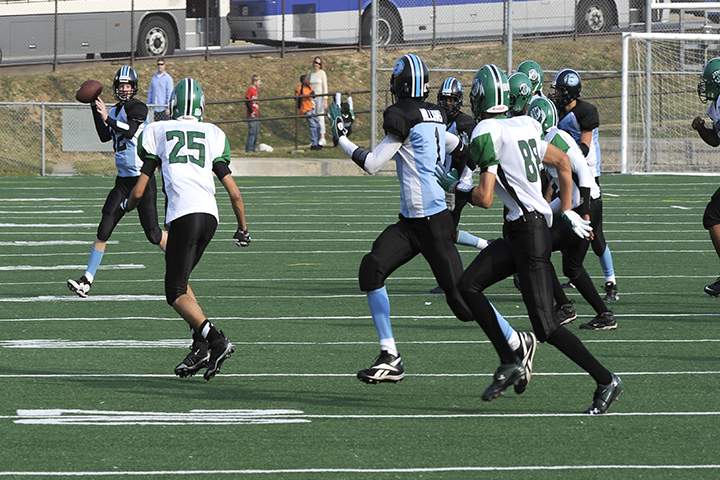The football team at North Dickinson County School in Michigan’s Upper Peninsula is going through changes, adapting to a new version of the game to preserve a community tradition that dates back decades.


The football team at North Dickinson County School in Michigan’s Upper Peninsula is going through changes, adapting to a new version of the game to preserve a community tradition that dates back decades.
The North Dickinson Nordics have dominated their conference, making it to the state playoffs for 23 years in a row from 1991 to 2013, but declining participation in the aging former lumber town forced school officials to make a decision: end its decades-old football program entirely or move to a smaller eight-player league.
North Dickenson officials resisted the move as long as possible, but ultimately opted to make the downgrade.
“Your football team is really on life support when you’re on eight-man, because there’s no place to go after eight-man,” North Dickinson Athletic Director Michael Roell told The Washington Post. “We’re hoping we can still have a football team for school pride, for homecoming, for all the things that should stay in high school.”
It’s a situation facing many schools in Michigan and beyond.
According to the Post:
As the game of football faces challenges nationally—head injury concerns, rising costs, sport specialization—the effects are being felt first and most acutely in small towns such as this outpost in Michigan’s Upper Peninsula.
Michigan has lost 57 11-man high school football teams in the past five years, but most, state officials say, moved to the eight-player ranks. The state has poured resources into creating separate junior varsity leagues, varsity conferences and playoffs for eight-player teams.
Eight-player leagues are growing in other states, as well. The National Federation of State High School Associations reports enrollment for eight-player teams is up 12 percent since 2009, data collected before Washington, Wisconsin, and Hawaii added leagues.
At many schools like North Dickinson, the choice boils down to eight-man football, or no football at all.
Senior tight end Jared Miller said that after the departure of last year’s talented senior class, there weren’t even enough players to fill out an 11-man team.
“Nobody wanted to go, but nobody said anything bad about it,” Miller said. “It was this or nothing. We only would have had eight players on varsity.”
And while many folks at the school and other small towns across the country mourn the loss of football as they know it, eight-player leagues are providing a way to carry on a tradition that plays a critical role in the moral culture of their communities.
University of Virginia sociologist James Davison Hunter, author of The Tragedy of Moral Education in America, writes that “moral education can work where the community, and schools and other institutions within it [like athletics], share a moral culture that is integrated and mutually reinforcing.”
Maintaining high school athletic opportunities, even on a smaller scale, is important because “the difference a coach can make in a youth’s life is enormous,” according to Los Angeles Clippers coach Doc Rivers.
Rivers, who advises the Positive Coaching Alliance, contends that positive influence begins with “showing high school and youth coaches how to teach life lessons while preparing them to win on the scoreboard.”
The Positive Coaching Alliance provides a wide variety of resources for coaches to help students form good character through athletics, from training sessions to workshops to online courses and other tools.